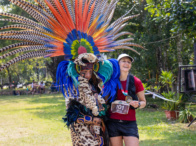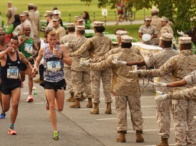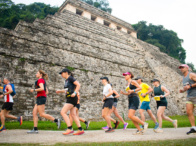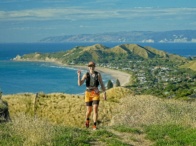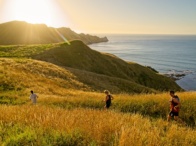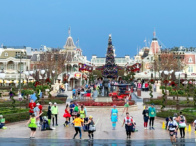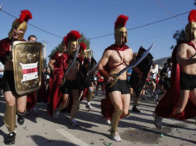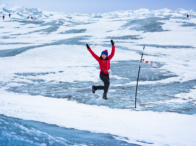The inaugural Travelling Fit Run the World tour to Cuba was held from 10th – 20th November 2018.
Cuba is a paradox on many levels. Decaying and dilapidated, yet grand and bursting with signs of former glory. Repressed and caught in a time-warp, yet vibrant and exciting like no other place on earth.
When travelling to Cuba, one needs to be prepared to be thrown many unexpected curve-balls and appreciate that things don’t occur to Western standards. Caught straddling somewhere between second and third worlds, Cuba can frustrate and fascinate all in the space of 5 minutes. But if you give in to its intoxicating air of salsa, unbridled sensuality, revolutionary history – and throw in a couple of mojitos and a hot-pink convertible 50’s Chevrolet – you’ll soon fall under its magic spell.
The island of Cuba is geographically shaped like a long, bendy banana with Havana in the west and Santiago de Cuba located at the far east of the island, where the tour started – not too far from infamous Guantanamo Bay, still under US territorial control. Over the next 10 days we traversed the island, working our way back towards the ultimate jewel in the crown – Havana.
Oh, and there was the small task of a marathon to run as well!
The beauty of the Run the World Cuba trip was that the actual marathon was secondary to the holiday and sense of excitement and adventure that Cuba provided.
Santiago de Cuba is a beautiful city, steeped in history as the birthplace of Cuba’s revolutionary movement. Our time in Santiago de Cuba included a tour of the old town, complete with locals dancing rumba on the main square. Next was a visit to Santa Ifigenia cemetery, final resting place of Fidel Castro. Here we got to see the changing of the guard, with goose-stepping soldiers reminding us – along with many Russian Lada cars still on the roads – of Cuba’s long affinity for the former Soviet Union during the Cold War days. Last stop on the itinerary of Santiago de Cuba was a visit to the old fort of El Morro. One of only three remaining stone forts in the Caribbean (the others in Havana & Puerto Rico), the fort evoked images of Pirates of the Caribbean. A highlight of Santiago was lunch at the fort at a nearby terraced restaurant overlooking the sea.
Next on the itinerary was a trip to the Sierra Maestra Mountains, home to Fidel Castro’s hideout during the late 1950s from where he launched the revolution. Getting there was half the fun – bumpy jeep rides that saw us climb the steepest road in Cuba to reach the heights of the mountains. From there we undertook a 3-hour hike through the jungle to reach Casa de Fidel (Castro’s “house”) – complete with seven concealed escape routes and a 50’s kerosene refrigerator which had to be lugged up the mountain by his commandants. Even a jungle-hiding guerrilla revolutionary leader needs a few creature comforts! With its remote location and primitive constructions of simple wooden structures and thatched roofing, it was hard to believe that a country’s government could be overthrown from such humble beginnings.
Then on to the provincial capital, Bayamo, also known as the “ciudad de los coches” (city of horse-carts). The city is a total step-back-in-time, with the main mode of transport still being horse and cart and nearly half of the city’s population still using horses for daily transport.
Next stop was the beautiful city of Camaguey, Cuba’s third largest city. Home to beautiful pastel painted colonial buildings, and what must be one of the coolest bars in the whole of Cuba on the main plaza – complete with cigar-smoking, Havana Club-drinking local dude in the corner!
Back on the bus, and then off to beautiful Trinidad – a perfectly preserved, frozen-in-time 1850’s Spanish colonial town, straight out of a Gabriel Garcia Marquez novel. Trinidad was made a UNESCO world heritage site in 1988, and rightly so. There we soaked up the cobbled streets, the stunning colonial architecture, and revelled in the wonderful “casas de la musica” (music houses) at night, which had Cuban son bands playing and salsa dancing until the wee hours. We visited surrounding sugar ranches with grand haciendas and hiked through coffee plantations and jungles to beautiful waterfalls and tropical plunge pools. We were also treated with a day on a catamaran to an island off the coast ringed by beaches of pure white sand and swaying palm trees.
On route to Havana, we stopped at the town of Santa Clara, synonymous with Che Guevara. The final destination on most Che pilgrimages, it contains a large monument to, and the mausoleum of Che Guevara, as well as the sight of a battle involving the derailing of an armoured Government train by Guevara containing troops, which ultimately lead to the success of the Cuban revolution.
And finally, to Havana! Havana must be one of the most vibrant, electric, awesome, sensual (in fact, downright sexy!) cities in the world. Alive with Cuban son (a la Buena Vista Social Club) music emanating from every bar, salsa dancing in the streets, under the sultry hot sun, Havana literally has to be experienced to be believed.
It drips with gorgeous, dilapidated colonial grandeur, old classic vintage American cars, and an air of its former glory (or inglorious) days when the rich and famous used it as their playground – the likes of gangsters Al Capone and Lucky Luciano ruled the casinos, and stars like Frank Sinatra and Errol Flynn were drawn like moths to a flame. Traces of Hemingway are everywhere, from the famous La Bodeguita del Medio bar where he downed mojitos, to El Floridita bar where he downed daiquiris (invented here), to the pastel-pink Hotel Ambos Mundos where he penned “The Old Man and the Sea” and “For Whom the Bell Tolls”.
The marathon itself was like no other. The crowds were not there, the aid stations were rudimentary, and the medal awaiting us was… Well, let’s just say, you don’t run the Havana marathon for the piece of bling at the end.
There were only a few hundred participants in both events (marathon and half marathon), but a good mix of local and international runners, including the odd celebrity like Will Smith (just to clarify, he only ran the half…). The marathon course was a 2 lap course of the half marathon route, taking in Centro Habana and the district of Vedado – Havana’s once notorious Mafia-run district. The marathon starts and finishes in front of the majestically domed, white limestone Capitolio Nacional building – reminiscent of Washington DC’s Capitol building. From there, the course runs down El Prado, Havana’s stately European-style boulevard which brings to mind Barcelona’s Las Ramblas. Down to the sea, and then around the corner to run a long stretch along Havana’s famous Malecon – a grand, oceanside esplanade that runs for 8 kilometers. On the second lap, the Malecon seemed to go on FOREVER, but at least the cool ocean breeze was refreshing on what was otherwise a humid, mid-30 degree day on race day.
The Malecon takes you past some interesting landmarks, like the Hotel Nacional perched on a clifftop overlooking the ocean – former hangout of gangsters, politicians and movie stars alike, and home to race headquarters and race-pack pick up – and the modernist US embassy which only reopened in 2015 after a thawing in US-Cuban relations under the Obama administration.
Later, the marathon route takes you through Plaza de la Revolucion, a grand communist-style square, famous for its mural stuck to the side of a tall concrete building, of Che Guevara and the immortal words “Hasta la Victoria Siempre” (Always Towards Victory) written underneath.
Back into Centro Habana and to the finish line at the Capitolio Nacional building, where the Travelling Fit crowd and already-finished runners were there cheering you to the finish line.
One of the highlights of the Marathon was being reminded of just how fortunate we are to live and run in the West, free of trade embargoes and political sanctions that Cubans have had to live under for years. After the race, many local runners approached us requesting our running shoes, and various pieces of running gear (caps, Garmins etc). At first it seemed annoying, however you just had to stop and realise that the average Cuban has nothing, and when you saw the shoes that most of them were running in – completely full of holes and falling apart – it was obvious that you had to give what you could. One Travelling Fit client had taken as many old running shoes as she could fit in her luggage and distributed them after the race to many gracious local runners. It was a sheer delight to see the tears of happiness run down their faces upon receiving a pair of shoes that we in the West would have otherwise tossed.
To celebrate the race, we were treated to a ride in a fleet of old vintage American cars – Chevies, Cadillacs, Buicks, Dodges, Fords – through the streets of Havana at night to the old 18th Century Fort where we had our celebratory dinner.
The final night was whiled away smoking fat Cuban cigars and having our very own Cuban Cocktail Crisis – mojito or daiquiri?
The Travelling Fit Run the World tour to Cuba and the Havana Marathon was one of the best trips, if not THE best trip, I have ever done. From the small group of adventurous like-minded Travelling Fit clients, I have forged many enduring friendships. There was something about the sultry heat, the sensual salsa tones and copious amounts of mojitos and daiquiris consumed that bonded us indelibly.
In the immortal words of the group Dragon, “Take Me To The April Sun In Cuba”.






